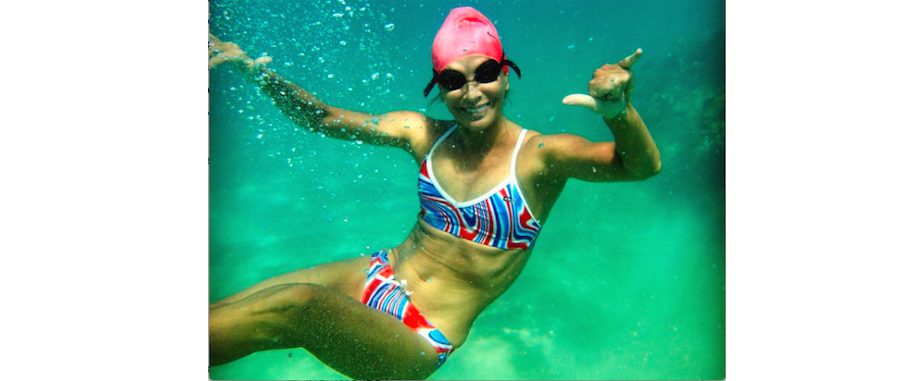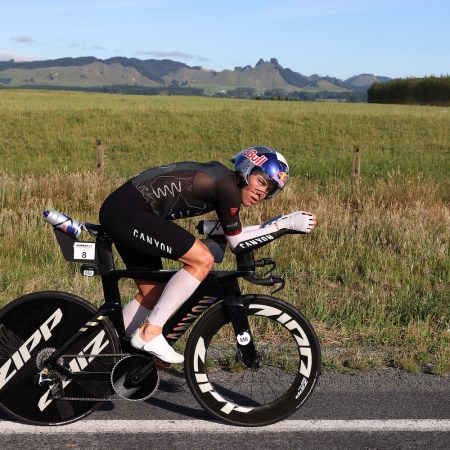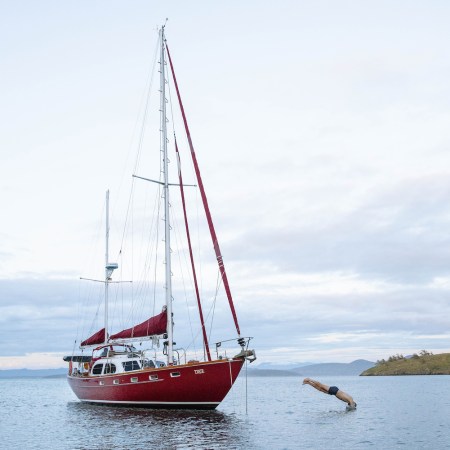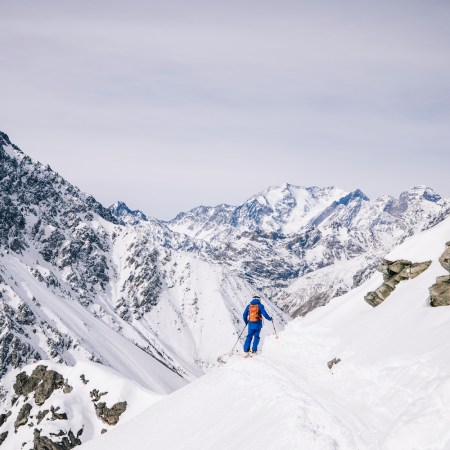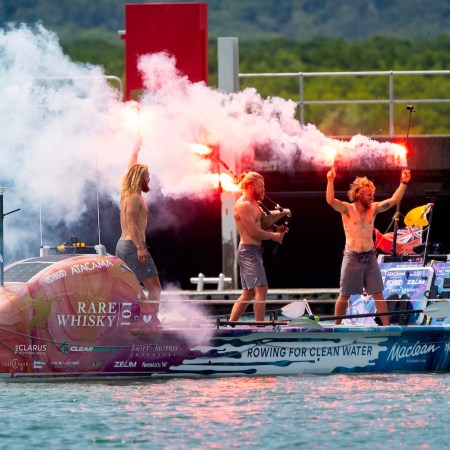“Oceanista” is how Susan Casey describes herself in her Instagram heading. I already knew that. As a connoisseur of her books, I’ve been familiar with her briny passions for quite some time. I voraciously devoured The Devil’s Teeth: A True Story of Obsession and Survival Among America’s Great White Sharks, before my first venture to swim with whites back in 2012. It came with me on the boat. My bookmark was the biosphere bracelet we wore on the dives and the pages are permanently dog eared and warped from the moisture that permeates everything after a week at sea. I then moved onto The Wave: In Pursuit of the Rogues, Freaks, and Giants of the Ocean. It was an equally extraordinary read. I became obsessed with rogue waves religiously stalking container ships via apps across the high seas…just in case any mysteriously vanished into the watery depths, engulfed by the algorithms that create these monstrous walls of water. Both books are, unsurprisingly, New York Times bestsellers. Her latest read, Voices in the Ocean: A Journey Into the Wild and Haunting World of Dolphins, sits by my side as I write, already promising to be as compelling as the first two.
View this post on Instagram
Susan is an excellent writer, but I’m no book critic. What I look for is passion and purpose. Not everyone has it. Even good wordsmiths. What’s magnetic in Susan’s work is her overwhelming fervor for the topics she chooses to pursue. The books seem to manifest out of her own pilgrimages toward vivid experiences and a profound understanding of subjects that fascinate her as an individual. It’s as if some cosmic force has bestowed upon her the duty of being a go-between…a translator of otherworldly places and creatures that one needs to witness firsthand to truly understand. Yet, Susan has encapsulated these intimate minutes in words and managed to give us lucid first-hand accounts in ways that feel like a portion of the reality was ours to be had.
It’s evident in her writing, her interviews, and her talks that she is a risk taker… fearless and confident…yet with enough respect for nature to make it back after each peregrination so she can have another. She sees more value in saying yes to life than avoiding the challenges and that pays off in dividends for the rest of us who get to immerse ourselves in various exotic journeys through her lens.
View this post on Instagram
Sometime I avoid researching those I admire. You can’t put humans on too high of a pedestal without risk of them sliding down a few notches when reality sinks in. Yet the more I dug into Susan, the more I smiled.
How could I not adore this woman? Her happy place is the ocean, she takes writing breaks in waterfalls; she loves sharks, kombucha and hates single-use plastic. She took a well versed stance against Kelly Slater in the Reunion Island shark cull. She likes cats…Maine Coons in particular…I grew up with one.
View this post on Instagram
Then it turned out that the vagabond Polish girl in me has a reason to be fond of Susan as well. This gal knows how to travel…lightly and with a first aid essential that will knock your socks off… a flask of 80 proof vodka.
“Vodka is literally—not just psychologically—good medicine. It’s a disinfectant, an antimicrobial, and an anesthetic, so it can clean a cut, prevent infection, and de-stress the patient all at once. Dab it on poison ivy to stop the itching. Pour it on a jellyfish sting to quell the pain—no need to ask someone to pee on you, ” Susan writes.
I took notes. Some of the most interesting bits of life advice I gather is in researching my stories. Apparently vodka will also humanely kill a fish when poured over the gills. That’s one for my next spearfishing trip.
Susan touted these libation benefits in an article for Outside Magazine, where she was the creative director from 1994 to 1999. She was also part of the editorial team that published the original stories behind the bestselling books Into Thin Air, and The Perfect Storm, as well as the film Blue Crush.
Some of the best people I know have a juxtaposition of interests and approaches to life rooted deep in their souls. It’s the red-lipstick-and-hiking-boots theory. You don’t have to be just one thing. I actually recommend a life lived broadly.
From 2000 to 2009, Casey was the development editor of Time, Inc; the editor in chief of Sports Illustrated Women.
From 2009 to 2013, Susan was the editor in chief of O, Oprah’s Magazine. She worked in a New York City office and brought her own brand of female empowerment to the magazine.
Yet, the call of the wild is a funny thing. You ultimately must heed it. Susan now splits her time between New York and Hawaii. Two universes not even entirely parallel. From boardrooms and phone calls with Lady O herself to deserted islands and conversations with cetaceans.
Susan has appeared on The Oprah Winfrey Show, The Daily Show with Jon Stewart, Conan, Anderson Cooper 360, Nightline, Good Morning America, Today, The CBS Morning Show, as well as many NPR programs including Fresh Air, The Takeaway, and Life on Earth.
On the flip side of life she has free dived as a mermaid, chased giant waves, trained as a sharpshooter and racked up enough bottom time to make any landlubber weak in the knees. And so it is. This lady and her writings are what one might call a great catch.
KP: How does a girl from Toronto who grew up afraid of fish become a water baby?
SC: For as long as I can remember, I’ve been obsessed by water. I don’t think it’s something I learned or developed—it’s always been there. Growing up in Toronto I didn’t have daily access to the ocean, but north of the city is lake country, and my family had a summer cottage in a region called Muskoka. The Canadian lakes have this dark, green-black water that always strikes me as mysterious; they’re filled with big, spooky-looking freshwater fish like northern pike and muskellunge, and as a kid I found them terrifying. But that fear was always mixed with fascination. At the same time I was summoning my courage to swim in Muskoka (which ultimately became my favorite water in the world), I began a competitive swimming career that lasted for more than three decades. My ocean experiences evolved from there. I began to race open water, which quickly led me to Hawaii. Over time, I realized that ocean marine life was gorgeous and the color of the water was heavenly, and it was fun to look around below the surface. Then, in 2000, I went to the Farallon Islands to report my first book, The Devil’s Teeth, which involved a pair of scientists who were studying a resident group of great white sharks in Northern California. I spent years around those sharks and my fear and fascination merged into awe. The more exposure you have to sharks, especially white sharks, the more you come to know their magnificence. And once you’ve been in the water with them, suddenly rock bass and gar pike don’t seem so frightening. These days, the creature I am most worried about meeting in the ocean is the box jellyfish.
KP: Passion is a powerful driving force for people. How did yours develop in terms of travel and adventure writing?
SC: I don’t think one sets out to become a writer—I think if you’re a writer, you know it, and pretty much the only thing to do about it is write. So I’m a writer, but it took me quite some time to have the confidence to make it my sole career. I spent many years as a magazine editor, so I was dealing with prose all day long, but my first book didn’t come out until I was almost 40. I’d found a story I couldn’t let go of, and as the reporting unfurled I realized that it was a book. That’s the only reason to write 100,000 words and spend five years of your life doing it: because you have a story that’s worthy. It has to have depth, and the right characters, and you can only ascertain that as you delve more deeply into it.
I don’t know if adventure and travel writing is the sum of what I want to write about. To date, those things have been major components in my work, but I’d also add science, history, natural history, and sports to that list. My books combine all of those things in their narratives. There was one period of my magazine career that dovetailed precisely with my personal interest in adventure, and that was the six years I worked at Outside in the middle to late nineties. That publication is all about travel, sports, and adventure, and it also has a deep literary streak. I was working with writers like Jon Krakauer and Tim Cahill, and on staff with writers like Hampton Sides and Michael Paterniti, so that magazine was a master class in writing about the world’s wildest places, people, and expeditions. While I was at Outside, I noticed that I often wanted to go on the story assignments myself rather than handing them off to a writer, so that was a clue.
KP: What are a few of the most extraordinary circumstances you’ve found yourself in while working on your books?
SC: That’s kind of a long list, but three come to mind right away. 1) Definitely, the most intense experience was trying to live aboard a 55-foot junker sailboat out at the Farallones. I was spectacularly naïve when I agreed to do that—but then again, I would’ve done whatever it took to report that story—and it almost cost me my life. The Farallones are harrowing on a good day, and there were many days out there that could be classified as less than good. 2) It was pretty extraordinary to go down the face of Jaws with Laird Hamilton. I was working on my second book, The Wave, and I’d wondered what it felt like for the big-wave surfers to ride seventy- and eighty-foot faces. That experience gave me a real taste of the rush they feel. 3) I was seriously rattled by the Solomon Islands. It’s a remote island archipelago east of Papua New Guinea that is basically a failed state. Honiara, the capital, is not quite as violent as Port Moresby, but it’s up there. I ended up having to go there for my third book, Voices in the Ocean, because it was a hub of live dolphin trafficking, and there had been an international outcry about this that led directly to one far-flung village slaughtering 2,000 dolphins in a fit of pique. The live dolphin trade is lucrative and bloody and the Solomon Islands is a tinderbox of civil unrest. I showed up there to meet a local activist who’d been trying to take down the dolphin traffickers. He’s quite a character—one of the main dolphin dealers had sent nine tribesmen to assassinate him, and they almost succeeded. I was told I should never go anywhere by myself—which was impossible, because I was traveling alone—and that the dolphin traffickers would know where I was and what I was up to at all times. That turned out to be true: I was followed from the moment I arrived.
KP: What is the force that drives you when it comes to travel and what is the ultimate takeaway?
SC: I have to think it’s curiosity—and stimulation. I find it wonderfully exciting to go somewhere I’ve never been. It’s one of the great joys of life, to roam around. My most frustrating and depressing moments have come when I’ve been confined to an office, which is why I dropped that lifestyle as soon as I could. When it comes to my writing, I travel with a singular purpose: to follow the story wherever it goes. That’s my favorite type of travel, because it’s like a scavenger hunt.
KP: I loved The Devils Teeth. I read it before I went to Isla Guadalupe for the first time to dive with white sharks. What is a key insight you would like for people to understand about sharks when all many people know is what they see on Shark Week?
SC: I haven’t seen Shark Week in ages, because the real science around sharks is so much more fascinating than sensationalized TV programming. I don’t want to watch celebrities hanging out with sharks (who cares?), or sharks attacking various objects (so male and so juvenile), or waste my time on a fake documentary about how the Megalodon is still alive. (Discovery really blew it with that one.) A shark researcher once told me that if every image you ever saw of a person showed them ripping into a chicken leg, you’d ultimately believe that’s all people do—tear things apart with their teeth in a frenzy. Sadly, that’s largely how sharks have been portrayed in the media. I know from personal experience they are far more nuanced than that. White sharks, for instance, are quite cautious about what they’ll attack or eat. They’re exceptional hunters, but a species doesn’t survive for hundreds of millions of years by launching itself at anything that moves. Since white sharks are one of the few shark species that is warm-blooded, it makes no sense for them to attack us. We’re not worth the calories they’d expend in the process. For prey, they need a blubbery animal—whale, seal, large tuna—that can provide enough fuel to make it worth their while. I’d recommend that people ignore Shark Week and start following real shark science. Or, like you did, get into the water with sharks and meet them yourself. Or read The Devil’s Teeth, which I wrote as a kind of anti-Jaws, to convey the mystique and the truth about white sharks. They’re exquisite creatures, to be marveled at rather than blindly feared. If Shark Week ever smartens up, I’ll be happy to change my assessment.
KP: I started traveling alone years ago because I was single and not always able to get friends onboard with my adventures. I vowed to never be the girl who waits for someone to experience the world. You are a woman who spends a good deal of time traveling solo and doing rather extreme activities. What advice do you have for other women who want to experience the world…by themselves if need be?
SC: I highly recommend traveling alone. It can be challenging, but that’s true of every worthwhile thing you’ll do in your life. Just do it wisely. Don’t land somewhere without doing some homework, having a backup plan and an emergency contact if something goes wrong. Don’t over-worry, but take the right amount of precaution. I feel fear as much as the next woman, but I’ve learned to see it as a traveling companion. In other words, don’t let it set the itinerary, but do respect its opinion.
If you’re embarking on solo adventure travel, you have to pack strategically and with an eye toward what could turn the trip into a misadventure. One thing I always take with me is a good medical kit. Each year I ask my doctor to prescribe me a broad-spectrum antibiotic, a painkiller, and some Xanax specifically for travel purposes. I also take a good knife, a solar battery recharger, and a flask of vodka. Vodka is inordinately useful, it turns out. I wrote a piece [for Outside magazine] about why it belongs in every traveler’s emergency kit.
KP: What do you feel are your biggest professional and personal accomplishments to date?
SC: One hates to blow one’s own horn, but I’m thrilled that my books have found so many wonderful readers. One highlight has been having my books hit some best lists from sources I really admire: The Devil’s Teeth is included on Apple’s all-time top-ten list of travel and adventure books, along with Into Thin Air, Wild, Eat, Pray, Love, and The Worst Journey in the World by Shackleton team member Apsley Cherry-Garrard; and was also was chosen for Outside magazine’s New Adventure Canon. The Wave was one of five finalists for the Indies Choice award, which is voted on by independent booksellers across the country (who are some of my favorite people on earth). Voices in the Ocean was named one of Amazon’s top books of the year.
From the start, my goal has been to sell enough books so that I can write more books, and that appears to be happening. Writing at book length is not easy to do, and I don’t take a healthy readership for granted. Each time, I try to raise the bar on what I’m delivering. I’m also proud of having won National Magazine Awards as a writer, an art director, and as an editor. (They’re the Oscars of the magazine world—and once upon a time, magazines were an important part of the culture.) I’m especially pleased to have won the overall General Excellence award in the women’s magazine category when I was the editor in chief of O, The Oprah Magazine. It was the perfect ending to that chapter of my life.
View this post on Instagram
Personally, I’m happy that I took my own desires seriously enough to act on them. It was always my greatest dream to live right on the ocean, so I could swim in it and look at it every day. In 2013, I left Manhattan and my magazine editing life and moved to Maui to focus on what I love most: exploring and writing about the ocean. That was a financially dicey thing to do—even for successful writers, the field is not exactly a get-rich-quick scheme—but I don’t think anyone should run their life based on fear of what might happen in a worst-case scenario. And so far, so good.
KP: Everyone has a message they put out into the world through their words, actions and lifestyle. What is yours?
SC: This question brings to mind the last line of one of my favorite books, The Bushwhacked Piano by Thomas McGuane: “I am at large.” I’ve always loved that idea: to be out there in the world, pursuing whatever you’re passionate about, guided by curiosity. I think that spirit infuses everything I write, and I’d be delighted if my stories nudged readers to be more fully themselves. Don’t stay at home, or stay in an unfulfilling job or crummy relationship, or stay in a place where you don’t want to get out of bed in the morning. Get out there and do the stuff you’re dying to do. Give yourself that permission.
View this post on Instagram
The other big message I’d impart is that we need to reconnect ourselves to nature. Part of being at large is to revere the wild places, creatures, and elements that are essential to everything, including our own wellbeing. I am inspired by E.O. Wilson’s theory of biophilia, which holds that we are part of nature, and when we try to separate ourselves from it or hold ourselves above it, we lose an essential part of ourselves. My best advice for achieving harmony with nature is to focus on what you love most: it may be the mountains, or the forest, or the desert, or, like me, the ocean—whatever it is, spend as much time there as you can. And, of course, do everything you can to protect it. If each of us did one concerted thing to help the natural world, we’d get somewhere.
Never one to sit still, Kinga Philipps has tested herself for the past decade by traveling the globe, rappelling, caving, scuba diving, jumping out of airplanes and diving with the sharks as a writer, producer and on-camera host. In her rare bits of free time, Kinga explores her singular fascination with sharks followed by a love for the beach, surfing, motorcycles, cars, charity work, travel, food and action sports.
This article appeared in an InsideHook newsletter. Sign up for free to get more on travel, wellness, style, drinking, and culture.
